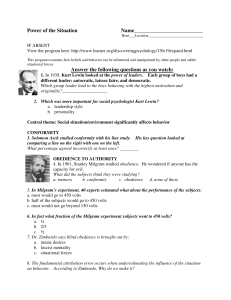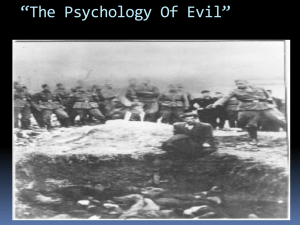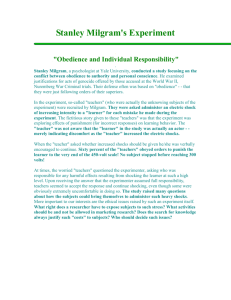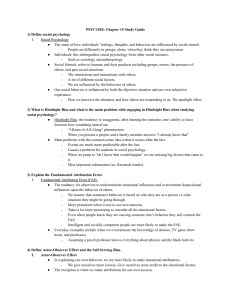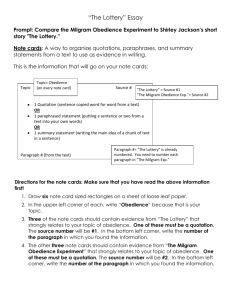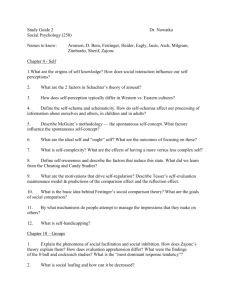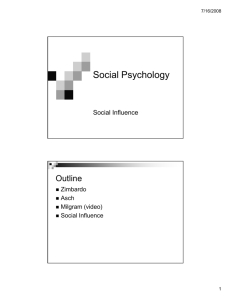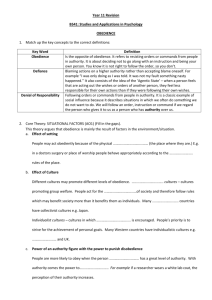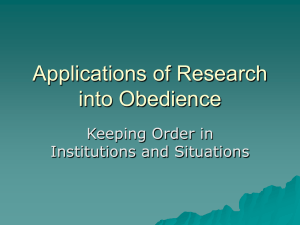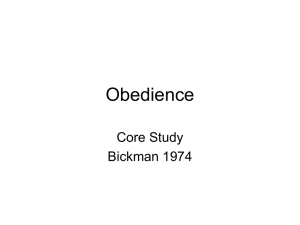Obedience - Passmores Falcon
advertisement
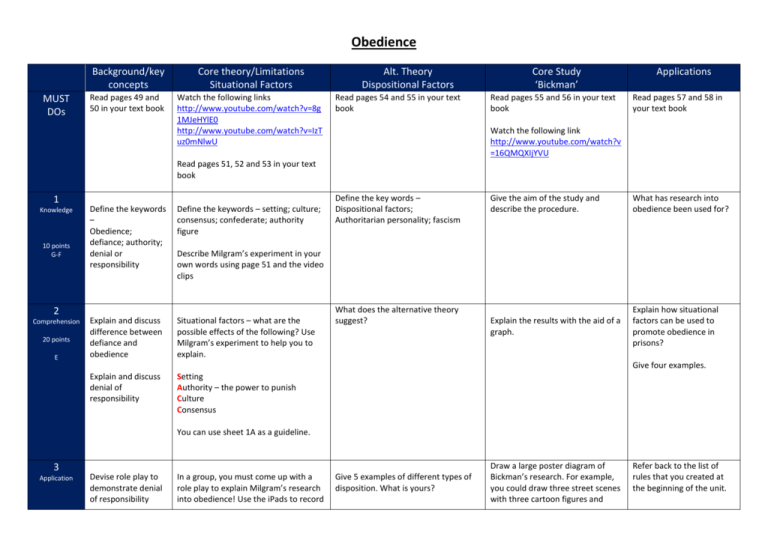
Obedience MUST DOs Background/key concepts Core theory/Limitations Situational Factors Read pages 49 and 50 in your text book Watch the following links http://www.youtube.com/watch?v=8g 1MJeHYlE0 http://www.youtube.com/watch?v=IzT uz0mNlwU Alt. Theory Dispositional Factors Read pages 54 and 55 in your text book Core Study ‘Bickman’ Read pages 55 and 56 in your text book Applications Read pages 57 and 58 in your text book Watch the following link http://www.youtube.com/watch?v =16QMQXIjYVU Read pages 51, 52 and 53 in your text book 1 Knowledge 10 points G-F 2 Comprehension 20 points E Define the keywords – Obedience; defiance; authority; denial or responsibility Define the keywords – setting; culture; consensus; confederate; authority figure Explain and discuss difference between defiance and obedience Situational factors – what are the possible effects of the following? Use Milgram’s experiment to help you to explain. Define the key words – Dispositional factors; Authoritarian personality; fascism Give the aim of the study and describe the procedure. What has research into obedience been used for? Explain the results with the aid of a graph. Explain how situational factors can be used to promote obedience in prisons? Describe Milgram’s experiment in your own words using page 51 and the video clips What does the alternative theory suggest? Give four examples. Explain and discuss denial of responsibility Setting Authority – the power to punish Culture Consensus You can use sheet 1A as a guideline. 3 Application Devise role play to demonstrate denial of responsibility In a group, you must come up with a role play to explain Milgram’s research into obedience! Use the iPads to record Give 5 examples of different types of disposition. What is yours? Draw a large poster diagram of Bickman’s research. For example, you could draw three street scenes with three cartoon figures and Refer back to the list of rules that you created at the beginning of the unit. 30 points D within groups and record it using an iPad. the final outcome. Explain the theory of the authoritarian personality. speech bubbles. What is the conclusion of the study? The outline of the role play can be found in Edmodo. What’s the situation? Who is in authority? How does the person following orders deny responsibility? 4 Analysis 40 points C 5 Synthesis 50 points B 6 Create or Evaluation Watch another groups’ role play and analyse how well they’ve delivered the concept of ‘denial of responsibility’ Watch the following video clip on the Stanford prison experiment by Zimbardo http://www.youtube.com/watch?v=rm wSC5fS40w&feature=related What is the F scale? Using sheet 1B fill in the situational factors for this experiment. Does it make sense? Give some methodological problems with the test. You are the new head teacher of a school and your aim is to improve behaviour. Compile a list of rules and explain why each is important. Research Hofling et al and analyse the experiment using SACC. Complete the F scale. http://beatroot.blogspot.co.uk/2006/0 6/take-f-scale-test.html What did Adorno find from the F scale? Complete activity 4.8 on page 57. OR What are the differences in ecological validity between this experiment and Zimbardo and Milgram? Make a video re-creating Bickman’s experiment. Now complete sheet 1B with a ‘real life’ example such as school, the army etc. Give at least two evaluations of the core theory. 60 points A/A* 500 points =C; 700 points = B; 880 points = A/A* Activity 4.7 page 55. Carry out the investigation into relationship between obedience and strictness of parents. Give at least two methodological limitations of the core study. Do any of your rules include any situational factors? If not, how could change the rule to apply situational factors? Go to http://www.army.mod.uk/j oin/25736.aspx Analyse the words and pictures in this document. Identify all of the ways in which this document encourages obedience in individuals.
